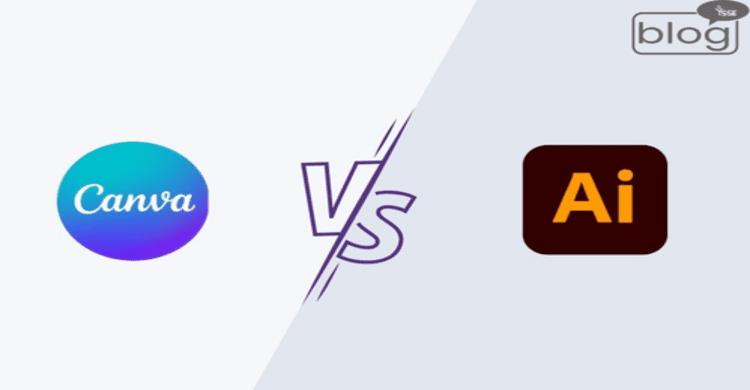In the digital age, graphic design and visual content creation have become paramount for businesses, educators, marketers, and individuals. Professionals and enthusiasts continually seek user-friendly, feature-rich platforms to bring their artistic visions to life. Two popular contenders in the design software arena are Adobe Illustrator and Canva. Each offers unique strengths and caters to different audiences. In this blog, we’ll explore the key features and differences between these design giants, helping you make an informed choice that suits your creative needs.
Adobe Illustrator: The Professional’s Playground
The industry standard for vector-based graphic creation has long been Adobe Illustrator. Illustrator offers a broad collection of tools and cutting-edge capabilities that enable users to create complex and scalable designs. It is targeted at professional designers, illustrators, and artists. Its accuracy, adaptability, and power make it a crucial tool for designing intricate artwork, including logos, icons, illustrations, and typography.
Key Features of Adobe Illustrator
Vector Graphics: Illustrator uses vectors to create smooth, scalable designs, ensuring that your artwork remains crisp regardless of size.
Advanced Drawing Tools: The software offers an impressive array of drawing tools, allowing artists to create and manipulate shapes with precision.
Typography Control: With a wide range of typographic tools, including variable fonts and text on a path, Illustrator empowers designers to create captivating text designs.
Artboard Management: Organizing multiple artboards in a single document simplifies the creation of multi-page projects, presentations, or design variations.
Pen Tool Mastery: Adobe Illustrator’s Pen Tool is revered for its ability to create and edit intricate paths, making it a must-have for experienced designers.
Canva: Empowering the Masses with Simplicity
Canva has transformed the design scene by enabling non-designers with its user-friendly interface, whereas Adobe Illustrator caters to professionals. Small businesses, entrepreneurs, educators, social media lovers, and others can all access design thanks to Canva’s cloud-based platform. For newbies, the design process is made simpler by the abundance of templates, stock photos, and drag-and-drop elements it offers.
Key Features of Canva
Template Library: Canva boasts an extensive library of professionally designed templates for various purposes, from social media posts to business presentations.
User-Friendly Interface: Its intuitive interface requires no prior design knowledge, making it accessible for individuals with minimal artistic experience.
Collaboration Tools: Canva allows teams to collaborate on designs, making it an excellent choice for group projects and marketing campaigns.
Stock Media Integration: With access to millions of stock images, illustrations, and icons, Canva eliminates the need for separate subscriptions or licenses.
One-Click Resizing: Transform your design to fit various platforms effortlessly with Canvas’s “magic resize” feature.
Adobe Illustrator vs. Canva: A Detailed Comparison
Target Audience:
Illustrator: professionals looking for accuracy and comprehensive features include creative agencies.
Canva: Small business owners, educators, social media managers, and individuals looking for easy-to-use design solutions
Design Capabilities:
Illustrator: Unmatched ability in producing intricate artwork and sophisticated vector designs
Canva: a simplified drag-and-drop interface for quick and visually appealing designs
Learning Curve:
Illustrator: Illustrator has a steeper learning curve because of its complex tools and advanced functionality.
Canva: There is virtually no learning curve, making it ideal for beginners and those with limited design experience.
Offline Access:
Illustrator: Installation is necessary, which restricts offline access to design projects.
Canva is Cloud-based, offering access to designs from any device with an internet connection.
Pricing:
Illustrator: Subscription-based, with different packages made for both people and companies.
Canva: Canva offers a free plan with premium features available through a subscription.
Canva and Adobe Illustrator each have unique features that meet various demands. If you’re a professional designer or illustrator looking for unmatched accuracy and control, Adobe Illustrator continues to be your top option. On the other hand, Canva’s user-friendly interface and large template library make it the perfect choice for beginners, business owners, and anybody wishing to create eye-catching designs quickly.
The decision between Adobe Illustrator and Canva ultimately comes down to your creative objectives, level of skill, and financial constraints. Whatever platform you use, keep in mind that imagination knows no limitations. In order to create captivating designs that inspire and interest your audience, whether you’re an experienced artist or a beginning designer, embrace these tools and let your imagination run wild. Happy designing!
To read more blogs, click here.
Dip Saha
Intern, Content Writing Department
YSSE

